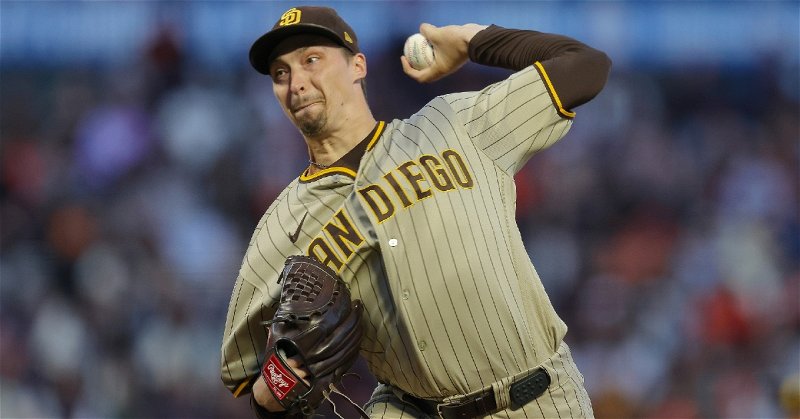
Commentary: Inexcusable that Cubs didn't go after top pitchers |
The Cubs lost their season opener in extra innings to the Texas Rangers on Thursday, but of course, the biggest story of the evening was Justin Steele's exit from the game in the fifth inning with an apparent hamstring injury.
For starters, Steele's early exit forced Craig Counsell and the Cubs deep into their bullpen in the 10-inning contest. Steele also had six punchouts and only allowed one run through 4.2 innings of work. However, Steele's injury threw Cubs fans into a frenzy. The initial panic of the injury automatically forced the mind to think about how the Cubs would backfill the rotation. The lazy thought would be fearing the Cubs' lack of depth—but if you think about it, the Cubs do not lack starting pitching depth. Justin Steele Shota Imanaga Ben Brown Cade Horton Many expect ten arms to make starts for the Chicago Cubs at some point in 2024—which should be plenty. When looking at this pool of starters, the real trepidation is not worrying about whether the Cubs have somebody who can start if Steele needs to miss an extended time. The trepidation is the lack of depth at the TOP END of the rotation. Without Steele, this rotation has no leader, ace, or number-one starter. That’s the concern. If the Cubs lose three games in a row, they don’t have a pitcher that, if he is pitching that fourth day, you feel good about your chances to win. They have talented arms who are capable of getting outs and going deep in ball games, but beyond Steele, there is no ACE (this could change depending on Shota Imanaga’s transition to MLB, but the point remains) It became apparent when Steele was writhing in pain on Thursday that he is simply the Cubs' least replaceable player. He may not be the best player, make the most money, or be the team leader, but his role is one that the Cubs do not have a backup for. They can cover his starts with any number of pitchers, but his consistency is something that you can not make up for. Despite the Cubs' depth in the starting pitching department, they are not deep at the top end of the rotation. Which begs the question. Why weren’t the Cubs bigger players for the services of Blake Snell and Jordan Montgomery? And before you say they were Scott Boras clients, may I remind you that Snell — the NL's reigning Cy Young award winner—settled for a two-year, 62 million dollar contract despite looking for nearly 200 million. Montgomery agreed to a one-year 25 million dollar deal with an option for 2025, coming off a dominant postseason with Texas and an expectation of a payday north of $150 million. The Cubs could have easily afforded either or both of these pitchers, who would lessen the blow of Steele or any other pitching injury. But the fact is, it shouldn’t take an injury to your ace for the Cubs to understand that signing Snell or Montgomery strengthens your team in 2024. I understand the desire to get young pitchers innings (Wicks, Assad, Wesneski, Ben Brown, Horton) or work with veterans (Hendricks, Smyly, Taillon), but if you have an opportunity to improve your team, you do so. Steele’s injury further emphasizes the importance of having reliable starting pitching. As much as the Cubs plan to include Wicks, Assad, Wesneski, Brown, Horton, Smyly, Hendricks, or Taillon in their 2024 plans, you can not deny that the Cubs would be a better team if they had Snell, Montgomery, or both on the roster. That, combined with the fact that both deals were low-risk and affordable, makes it inexcusable not to add to the top end of the rotation. According to Craig Counsell, Steele will likely be on the injured list for a month. Obviously, you hope Steele is back sooner rather than later, but these games while he is on the injured list will test the Cubs’ starting pitching depth immediately—while potentially exposing the lack of high-end starters. Unfortunately, that could lead to Cubs fans wishing they were more active this winter on Scott Boras’ phone about Snell and Montgomery.




